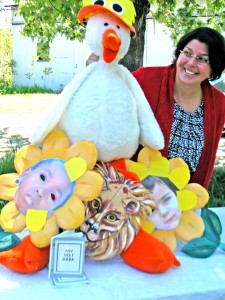The objectives of these interactive dramatic play presentations are for children:
- to be introduced to different kinds of people through gentle story telling activities
- to learn to play with identity and role through age appropriate creative play and drama activities
- to view themselves and others with acceptance and appreciation
Participants will have the opportunity to play-act various roles using masks and props from narrated gentle stories with a theme that emphasizes acceptance and appreciation of others. Some stories have a fantasy base or cultural mythological base, while others are situated in familiar settings such as a store or playground. Additional activities include mask-making and “drawing” stories of people.
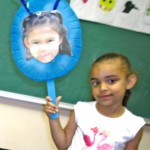 1. The First Butterfly (ages 3-8) A fantasy story about how the first butterflies came to be when the caterpillars learned to love all the flowers of all the different colors.
1. The First Butterfly (ages 3-8) A fantasy story about how the first butterflies came to be when the caterpillars learned to love all the flowers of all the different colors.
2. Baby Snowflakes (ages 3-7) The story of how “Mama Cloud” and “Papa Cloud” send their baby snowflakes down to visit “Uncle Earth.” When “Mama” and Papa send their babies on their second trip (in the spring), the babies dress as raindrops, so they can “wake up” the sleeping flowers.
3. The Legend of the Isle of Light (ages 3-7) This fable, told in poetry form, tells the story of a mystical bird named “Lauralee.” The bird inspires the people and animals of different lands to come together to “laugh, play, and sing.”
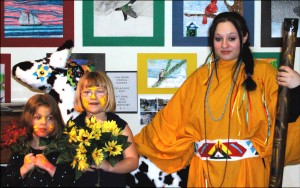 4. The Creation of the Horse (ages 3-8) This tale, based on a Native American legend, tells how “Medicine Woman” calls upon the elements of the earth and sky to come together to create the first horse.
4. The Creation of the Horse (ages 3-8) This tale, based on a Native American legend, tells how “Medicine Woman” calls upon the elements of the earth and sky to come together to create the first horse.
5. The Balls’ Grand Ball (ages 5-10) In this lively tale, all the balls gather at the “Grand Ball” to decide who is the “grandest ball of all” After the baseball, football, beach ball, eyeball, crystal ball, and many other balls boast about why they should be chosen, a mysterious stranger shows up and is bestowed the honor of “Grandest Ball of All.” Costumes, real balls and scripts combine for a real grand time.
Faces For Tots – Series 2 This series meets young audiences’ artistic, cognitive and emotional development needs in dealing with the issues of cultural differences, domestic violence and sexual abuse prevention as these issues relate to their lives. Very young children are often vulnerable to emotional trauma, abuse, and dangerous situations. Faces for Tots – Series 2 offers children coping, prevention and self-preservation skills on both practical and emotional levels.
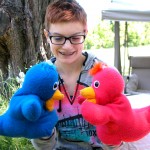 1. Baby Birds (ages 4 to 10) This poignant story introduces six bird families living in one tree. Each bird family has its own way of dealing with life. The baby bird in a nest of angry adults laments, “I can’t come out of my shell because it’s too hot. My little wings will get burned and I won’t be able to fly right.” The other nests are too cold (uncommunicative), too wet (sad), too rough (in words and actions), and too confusing. The final nest was built “just right” by the “bluebirds of happiness.” The baby “bluebird of happiness” shares its secrets with all the other baby birds so they can make their nest homes happier and safer places. Interactive puppets make this program special for young children.
1. Baby Birds (ages 4 to 10) This poignant story introduces six bird families living in one tree. Each bird family has its own way of dealing with life. The baby bird in a nest of angry adults laments, “I can’t come out of my shell because it’s too hot. My little wings will get burned and I won’t be able to fly right.” The other nests are too cold (uncommunicative), too wet (sad), too rough (in words and actions), and too confusing. The final nest was built “just right” by the “bluebirds of happiness.” The baby “bluebird of happiness” shares its secrets with all the other baby birds so they can make their nest homes happier and safer places. Interactive puppets make this program special for young children.
2. Quacking Ducks, Not Sitting Ducks (ages 4 to 10)
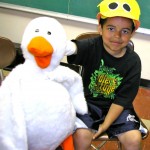 The story of how the baby ducks learn about boundaries and how the big ducks who are nice never try to cross them like the naughty big ducks do. When the naughty ducks try to cross the boundary line, the baby ducks learn to “quack,” run away, and tell a nice duck. They learn to not be “sitting ducks. Interactive puppets make the serious lessons memorable and fun.
The story of how the baby ducks learn about boundaries and how the big ducks who are nice never try to cross them like the naughty big ducks do. When the naughty ducks try to cross the boundary line, the baby ducks learn to “quack,” run away, and tell a nice duck. They learn to not be “sitting ducks. Interactive puppets make the serious lessons memorable and fun.

